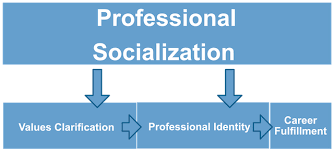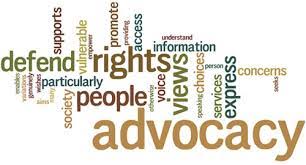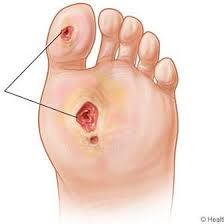
Mental Health Nursing
Order Instructions:
Dear Writer Sir, How are you today
Thank you so much for helping me for this assignment
Please have look this essay topic and include the dot point in given essay topic
Topic 1:
Contemporary literature has identified the increasing incidence and prevalence of depression in Australia. Discuss this phenomenon in relation to the reasons for this increase. In your answer consider gender-specific differences and the nurse’s role in the treatment and management of the illness.
Please include all the topics in this Essay
• What is depression?
• Why in Australia having a increasing rate of depression?
• Major location of people having depression in Australia
• What economic factor influence in depression in Australia
• What are the treatment options available for the depression and what are the rational for using those treatment, evidence of outcome
• Drug usually used to treat depression in Australia and rational
• Agenda and Resilience
• Incidence of chronic factor in relation to depression
• Parenting factor in relation to depression
• What are the common factor for depression in Men and Women in Australia
• Nurses role in intervention, treatment and management in relation to Depression.
1. APA Referencing
2. At least 25 genuine references from 2010 to 2015 study based,
3. 90 % references has to be research based Journal article
4. Australian and Newzeland based study article preferable.
5. Please have a look Rubric guideline for given topic, I need good grades in this assignment so please do me a favour and try to make a good essay
Regards
SAMPLE ANSWER
Mental Health Nursing
Depression is defined as mood disorder, which results to continuous feeling of sadness as well as reduced interest even in activities that resulted to depression in the past. This mental psychological disorder affects how one feels, thinks, or behaves which leads mental and physical complication. People often have difficulties in carrying out their day today duties. However, this mental illness works better with therapeutic and non-therapeutic interventions (Tiller, 2012).
Despite the fact that there has been advancement in management of psychological disorders in the last two decades, the incidence rates of depression have continued to rise in the world. The World Health Organization reports projects that depression will be the leading cause of disability. In Australia, depression is reported to affect about 20% of the adults, and is reported to affect women in two fold as compared to men (Australian Government, 2013). This is attributable to lack of awareness and knowledge about treatment and management of psychological disorders as compared to other non-communicable disease such as cardiovascular diseases and cancer. Since in the late 90’s, the mental health literacy among community is scarce. The mental health literacy includes beliefs about mental disorders, their signs, and symptoms for recognition, management strategies, and preventive strategies. The community campaigns such as beyondblue have had a great role in increasing awareness. However, there is room for improvement on strategies in mental health literacy (Widner & Chicoine, 2011).
Life events such as unemployment, substance abusive, and breaking relationship, loneliness or prolonged work related stress. These events are more likely to cause depression. Family history has also been associated with increase in genetic risk. People from families with history of depression are more likely to suffer from depression. The genetic factors interact with the immediate environment to make someone get depressed. Other people suffer from depression due to their appearance (Australian Government Department of Health and Ageing, 2013). Unattractive physical appearances are associated with low self-esteem. The main cause of increased incidences of depression in Australia can be associated with increased sedentary life, poor dietary, and unemployment. This has resulted with increase of drug abuse and substance use, which is reported at 37% (Brown et al., 2013). The poor dietary and sedentary life is associated with hormonal imbalances and leads to an increase in non-communicable diseases. The increase in these diseases also increases economic crisis to cater for the increased healthcare costs. This is associated with increased distress, which results to depression (Almeida et al., 2012; Luppa et al., 2012).
Statistics indicates that about the 45.5% suffer from mental disorders at one particular point of their lives. Approximately 20% of the citizens in Australia suffer from depression are of ages between 16% and 85% (Brown et al., 2012). This totals to about 3.2 million of people. This is associated to poor access to mental healthcare as only a third of the people can access healthcare (Byles et al., 2012). Depression is the leading cause of the mental disorders in Australia and is projected that it will be the leading cause of disability by 2020. Among the most affected people are young people of ages between the age of 12 and 25 years. There lacks statistics that highlights on the incidence rates of depression per location in the Australia, but is suggested that depression affects the Australian cities with equal magnitude. These cities include, Melbourne, Sidney, Brisbane, Canberra, Hobart, Adelaide, Queensland, New South Wales, Victoria, and South Australia (Stanners et al., 2012).
The economic depression is associated with increased rates of depression. With global depression, most people were dismissed and the rate of unemployment increase. Additionally, the lucky few who are still employed, the quality of employment is poor such as working for long hours under minimal wages. The results are increased devastation among the families and within the communities, resulting to psychological disorders (Foster, 2014). Additionally Low socioeconomic status (SES) is associated with increase in psychiatric disorders morbidity, disability as well as reduced access to care, Studies indicates that cities with lowest education group reported the highest level of depression (Atlantis et al., 2011). This is in turn associated with poor coping strategies, increased stress exposure, and increase in exposure to other risk factors that aggravates stress exposure such as malnutrition (Lawson, Rodwell, & Noblet, 2012). Additionally, the low socioeconomic groups tend to engage in risky activities such as binge drinking. Approximately, about 500,000 of people diagnosed with substance use also present depressive symptoms. Evidence base practice associates alcoholism with aggravation of depressive symptomatology. Initially, the people use alcohol and other substances as mood depressants that lead to addiction (Dury et al., 2013). Most of substance users are disorderly and will often violate laws. This makes people more distressed, anxious, and depressed. The overall economic burden is huge as it is estimated that $ 12.6 billion of total healthcare is spent on depression. Other economic costs include increased of broken marriages, family conflicts and panic attacks as well as increased dependence on relatives (Hegney et al., 2013).
According to evidence-based practice, the psychiatric disease can be managed effectively by pharmacotherapy and non-pharmacotherapy interventions. The pharmacological interventions included use of antidepressants. These antidepressants include tricyclics (TCAs), Monoamine oxidase inhibitors (MAOIs), serotonin-noradrenalin reuptake inhibitors (SNRIs), and selective serotonin reuptake inhibitors (SSRIs) (Reavley et al., 2011). These medications are associated with increase of brain neurotransmitters involved in sensitivity in the brain. Other pharmacological interventions include the use of repetitive transcranial stimulation (rTMS) which entails use of magnetic pulses at high intensity. Other new technologies involves use of electronconvulsive therapy (ECT) often used in severe depression incidences. These new technologies are extremely expensive (Rich et al., 2013).
Other intervention applied includes use of psychological interventions, which includes use of psycho-education and counseling. This helps because it encourages compliance and medication adherence as well as changes in cognitive behaviors. Most of the psychological interventions comprises of about twenty sessions provided as group format or individually (Batterham, Christensen, & Mackinnon, 2009). An example of such therapies include use of cognitive behavior therapy and mindfulness based cognitive therapy (MBCT) which have been proved to be effective in managing depression and prevention of relapse. This is because these interventions dwells on specific target symptoms by building on these fields including training on interpersonal skills, problem solving strategies as well as relationship training and counseling. These interventions also covers vocational guidance, techniques manage stress has well as controlling factors that increase risk factors that aggravates depressive episodes (Marcus, 2014).
A lot of work has been done to provide insightful discussion and agendas on relevant strategies to reduce the increasing rates of depression. The agendas that have been debated include barriers and facilitators of mental health and strategies to build a momentum to establish reforms. The increased community resilience is attributable to reduced support and recognition of roles played by the managers. To reduce depression resilience, there is need to establish structured government considerations and policies on strategies that will focus on group treatment as well as sustaining community wellness (Fisher et al., 2012).
Research indicates that about one million of Australians are diagnosed with depression every year. The effects of mental and physical health and have been associated with increased risk of other chronic complications including, type 2 diabetes and cardiovascular diseases (Eastwood, Phung, & Barnett, 2011). Other chronic disorders include angina, arthritis, and cancer. However, there is need to conduct more research to establish whether depression precedes these chronic disorders or occurs because of the disorders (Mitka, 2010).
This calls for longitudinal investigations to understand the association between age, parenting outcome, life events, demographics as well as lifestyle with the existence of depression. These are the common factors face men and women and have been associated with consequences of depression, with some of the factors being associated with exacerbation of the already existing diseases. Therefore, there is need to examine the pathways that occurs due to the interaction of these factors with the environmental influences. This will shed light on establishing the causal factors and the mechanisms of optimizing recovery of the depression process (Fishback, 2012).
Studies indicate that healthcare utilization among people diagnosed with depression is considerably low. Therefore, nurses are mandated in ensuring that they screen the patient extensively using the available screening tools to delineate between the psychosocial disorders. The nurses should also conduct extensive research on the evidence-based practice to tackle the issues of depression. The nurses should make extensive consultations as well as follow up sessions. These sessions should be used to educate the patient on the effective strategies of ensuring that medication therapy is adhered and that compliance is sustained (Payne & Uren, 2014).
References
Almeida, O., Pirkis, J., Kerse, N., Sim, M., Flicker, L., & Snowdon, J. et al. (2012). A Randomized Trial to Reduce the Prevalence of Depression and Self-Harm Behavior in Older Primary Care Patients. The Annals Of Family Medicine, 10(4), 347-356. doi:10.1370/afm.1368
Atlantis, E., Goldney, R., Eckert, K., & Taylor, A. (2011). Trends in health-related quality of life and health service use associated with body mass index and comorbid major depression in South Australia, 1998–2008. Qual Life Res, 21(10), 1695-1704. doi:10.1007/s11136-011-0101-7
Atlantis, E., Goldney, R., Eckert, K., Taylor, A., & Phillips, P. (2011). Trends in health-related quality of life and health service use associated with comorbid diabetes and major depression in South Australia, 1998–2008. Social Psychiatry And Psychiatric Epidemiology, 47(6), 871-877. doi:10.1007/s00127-011-0394-4
Australian Government. Measure Up.(2013). Available from: http://www.measureup.gov.au.
Australian Government Department of Health and Ageing. (2013). Better Access to Psychiatrists, Psychologists and General Practitioners through the MBS (Better Access) initiative. Retrieved from http://www.health.gov.au/internet/main/publishing.nsf/content/mental-ba.
Batterham, P., Christensen, H., & Mackinnon, A. (2009). Modifiable risk factors predicting major depressive disorder at four year follow-up: a decision tree approach. BMC Psychiatry, 9(1), 75. doi:10.1186/1471-244x-9-75
Brown, A., Mentha, R., Rowley, K., Skinner, T., Davy, C., & O’Dea, K. (2013). Depression in Aboriginal men in central Australia: adaptation of the Patient Health Questionnaire 9. BMC Psychiatry, 13(1), 271. doi:10.1186/1471-244x-13-271
Brown, A., Scales, U., Beever, W., Rickards, B., Rowley, K., & O’Dea, K. (2012). Exploring the expression of depression and distress in aboriginal men in central Australia: a qualitative study. BMC Psychiatry, 12(1), 97. doi:10.1186/1471-244x-12-97
Byles JE, Gallienne L. et al. (2012).Relationship of age and gender to the prevalence and correlates of psychological distress in later life. Int Psychogeriatr. 2012;24(6):1009–1018.
Drury, V., Craigie, M., Francis, K., Aoun, S., & Hegney, D. (2013). Compassion satisfaction, compassion fatigue, anxiety, depression and stress in registered nurses in Australia: Phase 2 results. J Nurs Manag, 22(4), 519-531. doi:10.1111/jonm.12168
Eastwood, J., Phung, H., & Barnett, B. (2011). Postnatal depression and socio-demographic risk: factors associated with Edinburgh Depression Scale scores in a metropolitan area of New South Wales, Australia. Aust NZ J Psychiatry, 45(12), 1040-1046. doi:10.3109/00048674.2011.619160
Fishback, P. (2012). Relief During the Great Depression in Australia and America. Aust Econ Hist Rev, 52(3), 221-249. doi:10.1111/j.1467-8446.2012.00355.x
Fisher, J., Chatham, E., Haseler, S., McGaw, B., & Thompson, J. (2012). Uneven implementation of the National Perinatal Depression Initiative: findings from a survey of Australian women’s hospitals. Aust N Z J Obstet Gynaecol, 52(6), 559-564. doi:10.1111/ajo.12000
Foster, M. (2014). Reworking the Relationship between Asylum and Employment. International Journal Of Refugee Law, 26(2), 315-318. doi:10.1093/ijrl/eeu025
Hegney, D., Craigie, M., Hemsworth, D., Osseiran-Moisson, R., Aoun, S., Francis, K., & Drury, V. (2013). Compassion satisfaction, compassion fatigue, anxiety, depression and stress in registered nurses in Australia: study 1 results. J Nurs Manag, 22(4), 506-518. doi:10.1111/jonm.12160
Lawson, K., Rodwell, J., & Noblet, A. (2012). Mental health of a police force: estimating prevalence of work-related depression in australia without a direct national measure 1,2. Psychological Reports, 110(3), 743-752. doi:10.2466/01.02.13.17.pr0.110.3.743-752
Luppa M, Sikorski C. et al. (2012). Age- and gender-specific prevalence of depression in latest-life – systematic review and meta-analysis. J Affect Disord. 136(3):212–221.
Marcus, J. (2013). Eradicating Employment Discrimination: Toward a Cultural Values Perspective. Industrial And Organizational Psychology, 6(4), 489-493. doi:10.1111/iops.12091
Mitka, M. (2010). Disability and Employment. JAMA, 304(18). doi:10.1001/jama.2010.1607
Payne, J., & Uren, L. (2014). Economic Policy and the Great Depression in a Small Open Economy. Journal Of Money, Credit And Banking, 46(2-3), 347-370. doi:10.1111/jmcb.12109
Reavley, N., Jorm, A., Cvetkovski, S., & Mackinnon, A. (2011). National depression and anxiety indices for Australia. Aust NZ J Psychiatry, 45(9), 780-787. doi:10.3109/00048674.2011.607130
Rich, J., Byrne, J., Curryer, C., Byles, J., & Loxton, D. (2013). Prevalence and correlates of depression among Australian women: a systematic literature review, January 1999- January 2010. BMC Research Notes, 6(1), 424. doi:10.1186/1756-0500-6-424
Stanners, M., Barton, C., Shakib, S., & Winefield, H. (2012). A qualitative investigation of the impact of multimorbidity on GP diagnosis and treatment of depression in Australia. Aging & Mental Health, 16(8), 1058-1064. doi:10.1080/13607863.2012.702730
Tiller, J. (2012). Depression and anxiety. Med J Aust, 1(4), 28-31. doi:10.5694/mjao12.10628
Widner, D., & Chicoine, S. (2011). It’s All in the Name: Employment Discrimination Against Arab Americans1. Sociological Forum, 26(4), 806-823. doi:10.1111/j.1573-7861.2011.01285.x
We can write this or a similar paper for you! Simply fill the order form!












